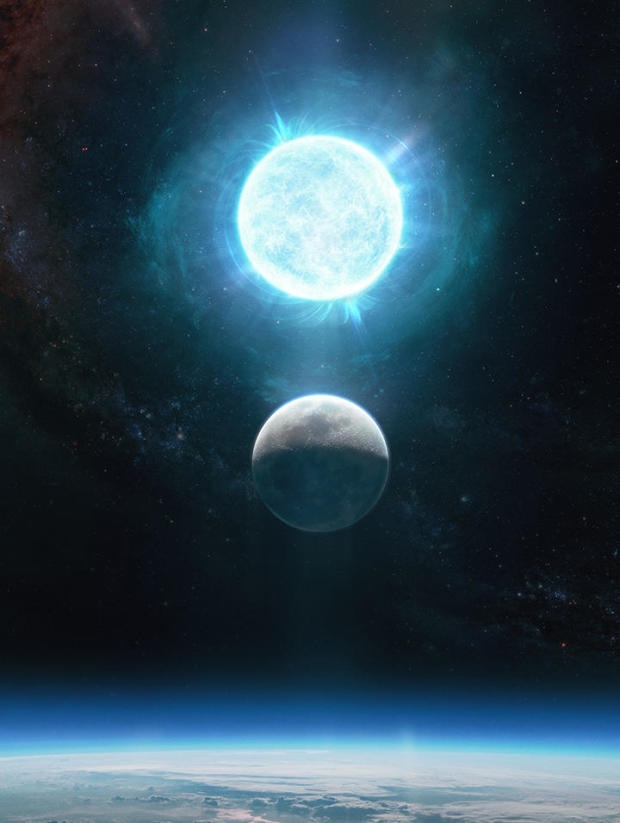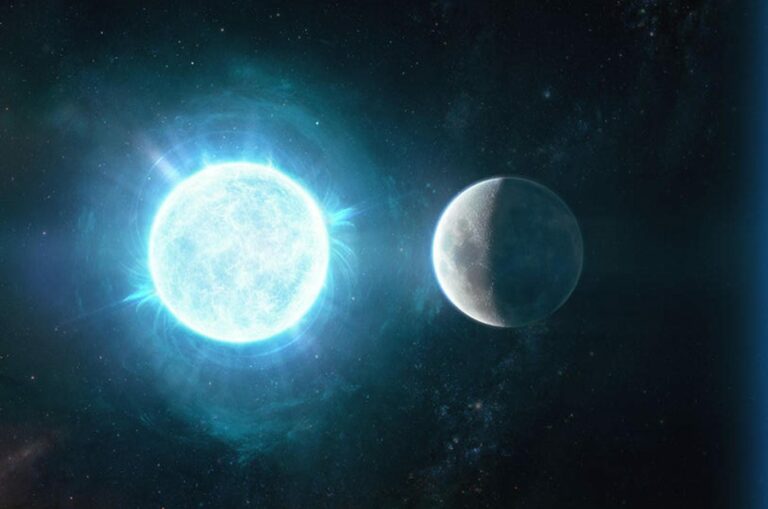Astronomers have discovered a star that is as small as the moon but has more mass than the sun.
The smallest and the most massive white dwarf star that has ever been observed by astronomers is the smallest and the most massive white dwarf star that has ever been observed by astronomers.
A recent study that was published in the Journal Nature states that the “very special” star is filled with the same amount of mass as the sun into a much smaller body that is half the size of the moon. It started from the merging and colliding of two less massive white dwarf stars that had been orbiting one another for an entire life.
Most stars eventually die and turn into white dwarfs, which are, in fact, smoldering corpses and among the hottest and densest objects in the universe, along with neutron stars and black holes. Our sun will be the red giant in billions of years, and then in the end it will go through the exactly the same process.
According to the statement of the lead author Ilaria Caiazzo, “It seems contrary, but smaller white dwarfs are actually more massive. “” This is because white dwarfs do not have the nuclear burning that is present in normal stars, which is used to keep them against their own gravity and their size is then controlled by quantum mechanics. ”
A super magnetized dead star, ZTF J1901+1458, is 130 million light years away from Earth, which makes it a reasonably close object. Caltech’s Palomar Observatory has a facility for detecting transient astronomical objects called Zwicky Transient Facility (ZTF) that found the discovery.
The combination of the two white dwarfs made the largest star ever recorded, having a mass of about 1. The sun has 35 times of the energy that is produced by humans, that is, 35 times the power of the sun. If one of the stars had been a bit more massive then the merger would have resulted in a supernova, which is the explosion of a star.

ZTF J1901+1458 is a very fast rotating star which has a magnetic field of the same strength as that of the sun. While the sun rotates in 27 days, ZTF J1901+1458 completes its revolution in seven minutes.
It is the smallest known white dwarf in the universe that is more than 400 miles smaller than the next smallest one, with a diameter of 2,670 miles. The distance between the moon and Earth is 2,174 miles, while the moon is 2,174 miles across.
“We found a very interesting object that was not so big to explode, “Caiazzo says. “We really were exploring the limit of how massive a white dwarf can be. “
Then, what will happen to the rarest star?
The star’s mass is believed to be enough for it to transform into a neutron star, which normally happens when a star that is much bigger than the sun explodes in a supernova. If their theory is correct, a significant amount of neutron stars in the universe might have been formed in this unexpected method.
“The star is so large and dense that, in the core, electrons are being caught by protons in nuclei to form neutrons. , ” Caiazzo said. “The force of gravity of the electron pushes against the pressure of the core keeping the star intact, hence the core collapses when a big number of electrons are removed”
Considering the fact that the star is only a few tens of millions of years old and is so close to us, therefore, the same kind of phenomena might occur in our own galaxy more frequently.
Thus, till now, nobody has been able to investigate astronomical phenomena systematically on a timescale of this magnitude. The outcomes of these endeavours are amazing,” stated Kevin Burdge, who initially observed the star in the all-sky images.
Nonetheless, scientists say they are just at the onset of their research.
There are many questions to be answered, for instance, what is the frequency of white dwarf mergers in the galaxy, and is it enough to account for the number of type Ia supernovae? Caiazzo pointed out. “What are the processes involved in the creation of magnetic fields in the highly energetic events, and why do the magnetic field strengths differ among white dwarfs? Discovering a big population of white dwarfs born from mergers will help us answer all these questions and more.”
Do not forget to share your opinion with us to provide you with the best posts !




0 Comments